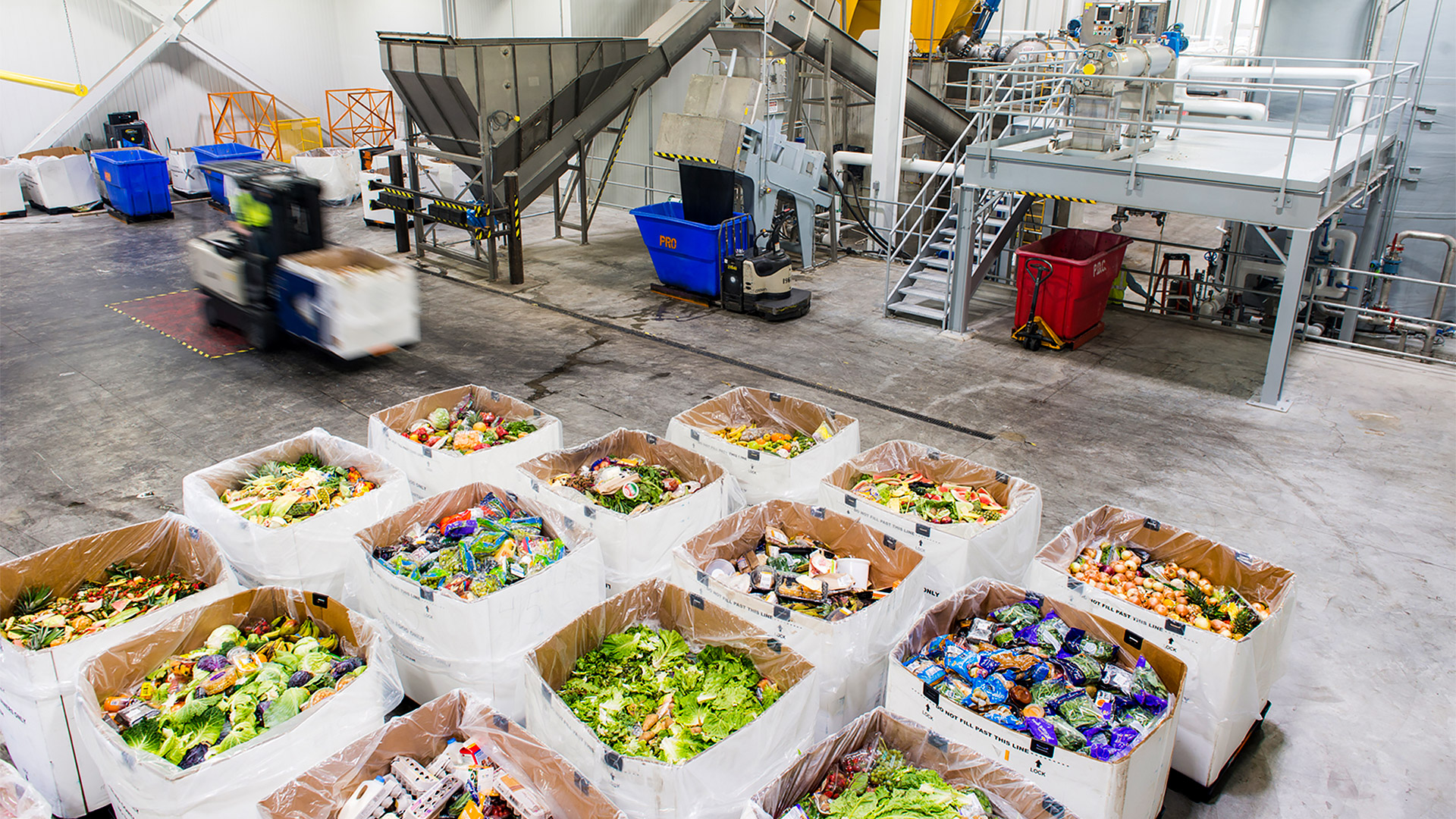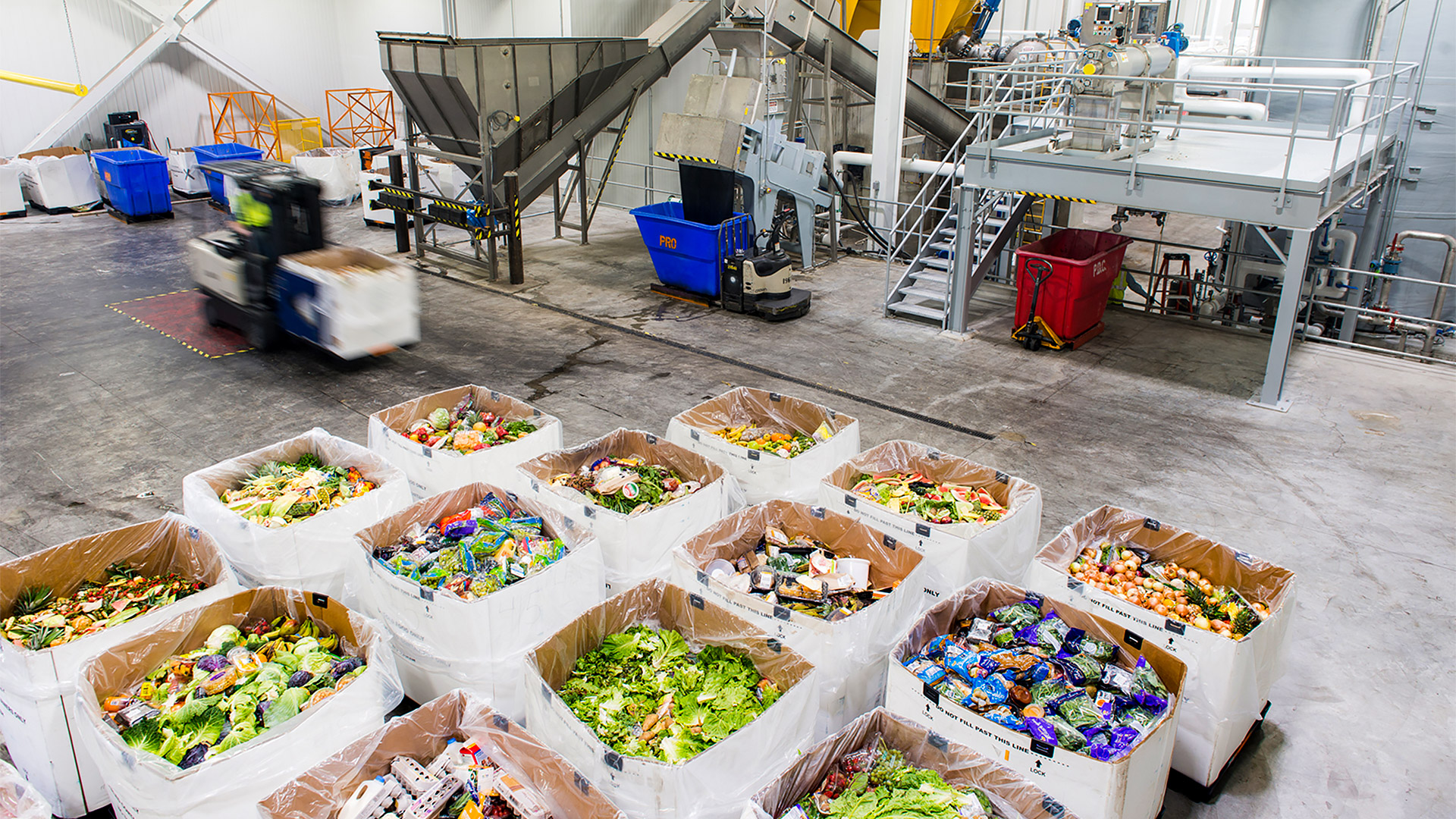
These companies want to tackle food waste with microbes
One option, called anaerobic digestion, is widely used today in wastewater treatment plants around the world. Now more places are using it to handle other waste, like manure on farms and discarded food. Germany leads the world in anaerobic digesters: the country runs about 10,000 such reactors today. In the US there are just over 2,000, and only a few hundred are used for food waste.
Here’s how it works. When companies get food waste from grocery stores or food distributors, they basically liquefy it, turning it into a “trashy slurry,” Begin says. The rubber bands, stickers, and plastic packaging are removed, and the slurry is then shepherded through the rest of the process. The star of the show is the community of microbes seeded into the reactor, a bit like a sourdough starter. They gobble up the food waste and transform the watery mixture into the final products: biogas and a solid material called digestate, which can be added to soil.
“We really are microbe farmers,” says Christine McKiernan, director of engineering and construction at Bioenergy DevCo, a company that builds and operates anaerobic digesters. Keeping the microbes happy means making sure the conditions are just right, within tight ranges of temperature and acidity. They also don’t like their food too salty, McKiernan says.
Composting might be a more familiar process for dealing with food waste—it also employs microbes, and it also produces a solid material that’s packed with nutrients. The big difference is that composting happens in the presence of oxygen, so microbes break down the waste into dirt while emitting mostly carbon dioxide.
If a compost pile doesn’t get mixed enough, its microbes will be deprived of oxygen. It will naturally start going through anaerobic activity, forming methane: bad news for composting facilities that are often open to the atmosphere. Over short time spans, methane is about 80 times more powerful as a greenhouse gas than carbon dioxide.

